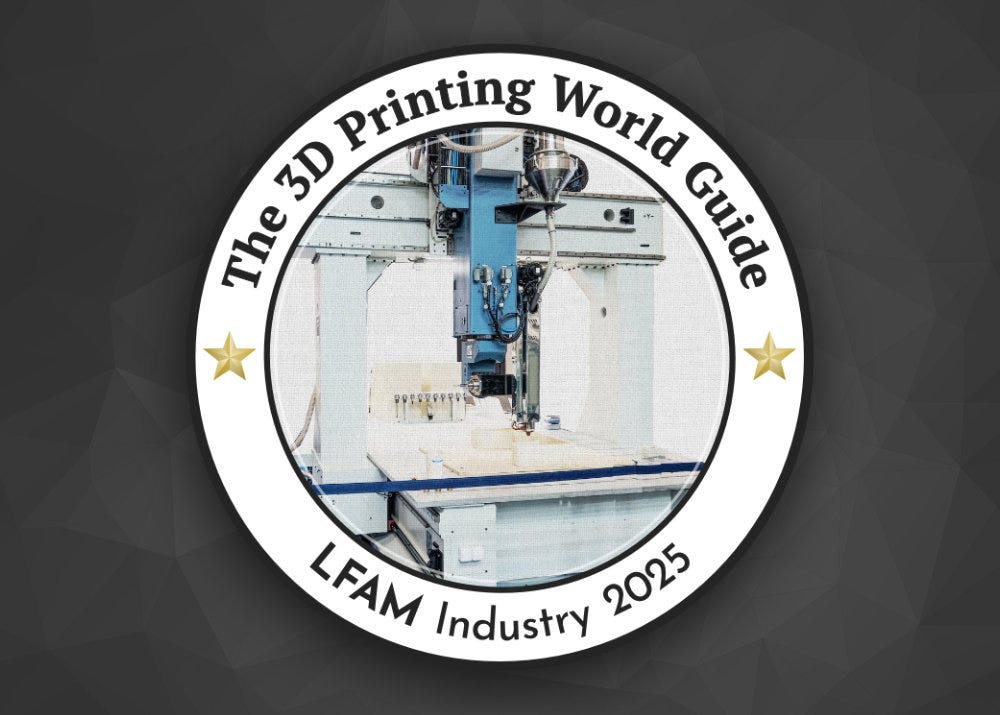The real reason why large corporations fail in the 3D printing business
The Atomic Layers: S9E14 (00251)
Atomic Layer of the Day:
So, there’s this huge, huge industrial company—older than 3D printing itself. It employs thousands of people, manufactures thousands of products, and generates billions in revenue.
Since it operates in Europe, it has also recently begun generating billions in losses—thanks to the Green Deal, the war in Ukraine, and before that, COVID. But that doesn’t really matter. This is one of those companies that are too big and too important to fail.
For some time now, this big company—let’s just call it The Big Corp—has been involved in the AM sector. Of course, only on a micro scale. It technically has a presence in AM, but it’s never been anyone’s first choice. Within its corporate structure, it generates about 0.00001% of total revenue.
Seriously, the revenue from 3D printing is completely invisible to accounting and financial controlling. The system doesn’t even register it. Everything ends up in “miscellaneous” or “other.”
The AM division has been losing money from the beginning, but again—in comparison to The Big Corp’s total operational costs, those losses are also invisible. Every now and then someone stumbles upon it and raises the question: should we maybe shut this down? Since it barely matters in the grand scheme of things anyway?
But there’s a catch. At the very beginning, Big Corp made a lot of noise around this whole 3D printing thing. There were press conferences, press releases, huge trade show booths. A dedicated building was established (“The AM Competence Center”), expensive equipment was purchased, several high-end 3D printers were installed, and staff were hired to run them.
The official message sent out into the world is that everything is fine. The AM division is operating and doing “increasingly well.”
The point is, if they were to shut it down, shareholders might remember it and start asking questions. Who knows, they might even want someone to be held accountable.
This is a large corporation, so every decision comes with a corresponding document—usually an email.
Like in communism. Everything has a paper trail.
The employees in the AM division—low-level executives—do everything they can to maintain the status quo for as long as possible. After all, it’s their jobs on the line. They stay under the radar of top management, constantly producing new documents claiming there’s progress. Small, slow, but progress nonetheless. Even though, in reality, there’s regression.
The longer they do this, the more documentation they produce. Which in turn becomes a growing pile of evidence against them. A mountain of broken promises, flawed analyses, and overblown expectations.
I have no idea why it’s always like this—but it is. Sooner or later, every such irregularity and lie gets exposed. Not just in 3D printing—everywhere. As if it all passes some critical threshold and BAM! Suddenly everything collapses…
Remember how the company had been generating billions in losses recently? Right—so a new CEO comes in, along with new board of directors and new executives. They slowly start digging into projects and investments. Eventually, they stumble upon the AM division. They put everything under the microscope. Everything gets revealed.
But only internally. This isn’t politics, where the mistakes of the previous government are grilled in friendly media by those currently in power.
Everything quietly dissolves. Some people are let go, others are transferred to different departments. For a few months, they try to offload whatever they can—machines, IP, business contacts. Sometimes one of the former execs decides to pick up the pieces and launch their own startup from the leftovers.
Occasionally, there’s an official statement saying it’s over. Usually about 8–10 months after the fact. Sometimes there’s no announcement at all.
Yeah, it happened, it’s over, why talk about it?
It was always just 0.00001% of total revenue anyway.
Atomic Layer from the Past:
04-14-2015: Stratasys introduced the groundbreaking large-format 3D printer Objet1000 Plus.
Calling all LFAM 3D printers manufacturers!
This is the final call to submit your application – the deadline is Tuesday (April 15, 2025) at 12:00 PM CET. The guide is scheduled to go live at 5:00 PM the same day.
📅 Planned release date: April 15, 2025.
News & Gossip:
Sicnova becomes UltiMaker’s exclusive distributor in Spain and Portugal, expanding their decade-long partnership. The collaboration enhances supply stability, technical support, and customer care—especially in Catalonia.
Shapeways will relocate its Eindhoven factory to a larger site at Strijp T in late 2026. The move supports growth, expanded services, and sustainability goals. The new facility, a renovated Philips building, will improve efficiency, comfort, and daylight access. This announcement also shows that the company has apparently recovered from its problems last year when it was formally bankrupt for several months.
Farsoon has introduced two laser upgrades for its FS350M metal 3D printer: 4x1000W for high-performance alloys and 6x500W for faster throughput. Both maintain the 433×358×400 mm build volume and offer up to 200% improved efficiency. New features include smart lapping, support reduction, and a permanent filtration system.






Re: your Article on……The real reason why large corporations fail in the 3-D printing business… Another brilliantly written article/piece….Pawel!!! Very compelling!! Congrats!